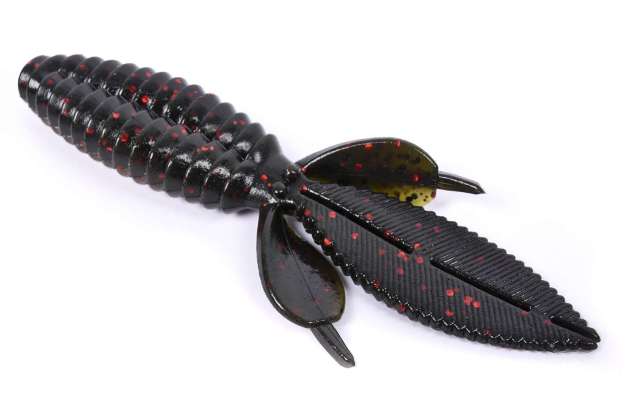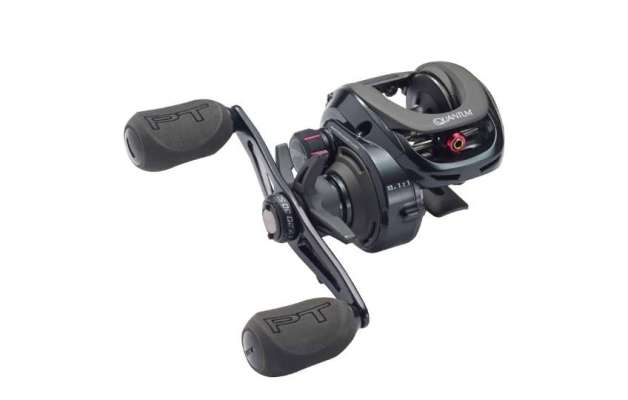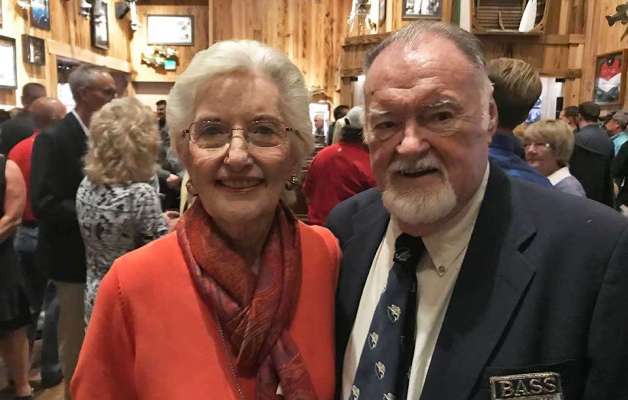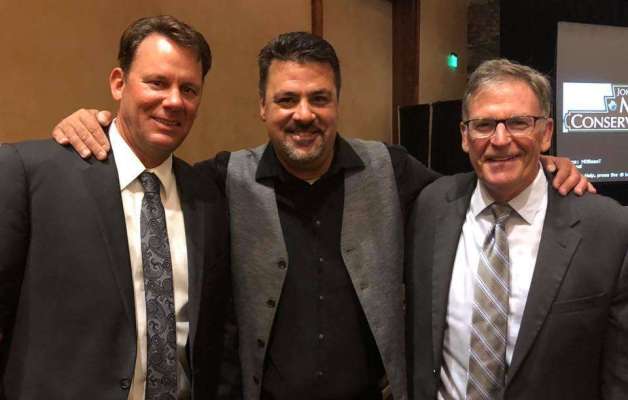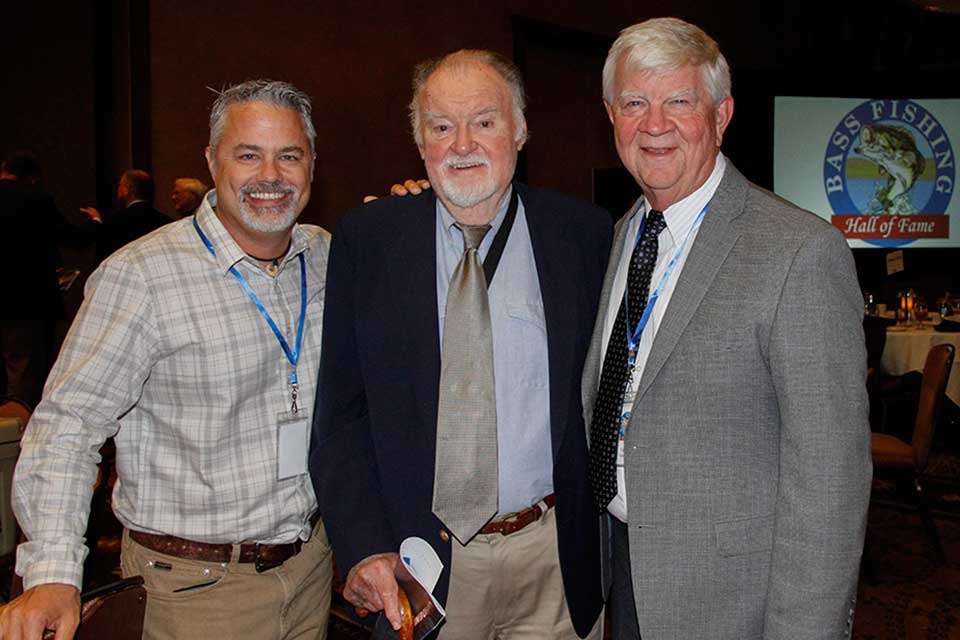
More than 50 years ago, Bob Hamilton was told his world record spotted bass would probably never be broken. Hamilton, who wrote about how he caught the 8-pounder from Alabama’s Smith Lake for the first edition of Bassmaster Magazine, wasn’t so certain, ending his article with a prophetic line:
“I’ve always heard that records are made to be broken. So good fishing.”
The record, in fact, has been broken numerous times since, most recently at California’s New Bullard’s Bar Reservoir by fish stock from Smith Lake, another good story. Yet the underlying message, one that can be credited for Bassmaster Magazine’s longevity, are seeded in Hamilton’s final words – good fishing.
That pretty much sums up the mission statement of Bassmaster Magazine since B.A.S.S. founder Ray Scott cobbled together that inaugural edition in the spring of 1968. Although greatly advanced in writing, photography, information, design and features, Bassmaster continues to print information to enhance the bass fishing experience of its readers.
Funnel feeds flow of fishing info
A major change from the first to second Bassmaster editions was using glossy paper instead of cheap print stock, but Scott’s idea to disseminate information on bass fishing was eagerly accepted no matter the presentation. Scott served as editor for that first magazine then soon after hired Bob Cobb, a newspaper man from Tulsa, as editor.
Searching for suitable copy, Cobb quickly found himself in a pickle … at least a pickle box. Scott had anglers from across the country send in their letters, stories and tips, and Cobb was the word wizard who turned those stacks into readable material that hooked generations.
“When I went to work for B.A.S.S., there was a box over in the corner – Whitfield Pickles,” Cobb said before reciting its jingle. “’The pickle with the perfect pucker, picked at the peak of perfection, by particular pickle picking people.’ In that box, there was clumsily written stuff, but it was pure prose from the standpoint of how to catch fish, and that’s what the bass fisherman was eager for.”

Editor’s note: Bassmaster Magazine covers from the 1960s and 70s.
Cobb’s editing skills were up to the task as he managed production of almost 200 editions and developed a well-read product before moving to Bassmasters TV. Cobb, whose efforts earned him an induction into the National Bass Fishing Hall of Fame in 2002, said he recalls typical tasks to get the product off the ground, like the first story he received from longtime B.A.S.S. employee Harold Sharp.
“It was one sentence that ran three pages,” Cobb joked. “Ray said we were going to run it anyway, ‘So get some scissors and cut it up, make some paragraphs’ … We’d take copy out of that pickle box, put a comma in it, a period, and go.”
Information from B.A.S.S. tournaments began to form the editorial slant of Bassmaster. The best bass anglers would be out vying on fisheries and their best techniques and tactics, as well as photos, were soon shared with the masses. Getting the stories of how the top anglers caught them lent great authority to the magazine.
“A bass tournament was like a laboratory, a seminar,” Cobb said. “There was a big funnel there, and everybody who came in and caught fish poured something in there, and what dripped out was how-to information that went straight to the pages of Bassmaster Magazine.”
In September, Cobb made sure to attend the BFHOF induction of Helen Sevier, who worked alongside him at B.A.S.S. as marketing director before becoming owner and serving as CEO. Sevier helped grow the organization’s membership, but she agreed it wouldn’t have been so easy without someone like Cobb giving her a worthy editorial product.
“It was all about the information,” Sevier said. “That was the key, whether it was building the prose or teaching them how to catch fish. They wanted to know how to catch fish, how to catch more fish, how to catch bigger fish. Bob was a genius in his ability of being able to transmit that information.”
Longevity of product point of pride
Another meeting with a newspaper man landed Scott his second editor, Dave Precht. As outdoor editor of the Houston Post, Precht impressed Scott while he covered the 1978 Bassmaster Classic on Ross Barnett and was soon hired with the promise of taking over the magazine.
“I don’t think Bob was ready to give it up,” Precht said. “In fact, it was five years later before I got Bassmaster.”

Editor’s note: Bassmaster Magazine covers from the 1980s.
Precht served as editor at Southern Outdoors magazine for Scott before Cobb vacated the coveted spot in his move to TV in 1984. In charge for the next 19 years, Precht, now B.A.S.S. vice president of publications and communications, has so far held the longest tenure of the three Bassmaster editors. While following the original mission of good fishing and conservation, Precht also helped promote boating safety, youth fishing, sport fishing ethics and fishing as a family activity.
He strived to create balance of content in the pages, and much of that was facilitated by guiding staff and freelance writers and running items he believed the readers desired. Precht said Bassmaster has been fortunate to publish award-winning outdoor writers like Homer Circle, Byron Dalrymple, Wade Bourne, Don Wirth, Steve Price, Louie Stout and Tim Tucker, among others.
“We try to make sure the stories proposed by the writers are the ones that the readers need to read,” he said. “Somebody who is already into fishing can probably Google and find whatever he wants to learn about on the internet. There’s something different about opening a magazine and you seeing a story. We want to surprise them with a story they really like but didn’t know to look for.”
Precht, inducted into the BFHOF in 2011 and now serving on its board, benefitted from feature franchises like “Harry ‘N’ Charlie” and “Day on the Lake,” and artists like Cliff Shelby and Chris Armstrong. A growing trend he saw come into focus was in the photography, which now includes more on-the-water action from events. Looking back at much of the early artwork and covers, he said Cobb had to rely more on artist renditions.
“We had a mixture of underwater shots and the old grip and grin,” he said. “The one I liked to run, but we didn’t get very many good ones that looked authentic, was the leaping lunker – the bass just shaking its head while coming out of the water. It changed over the years. During my time, we occasionally used pros on the cover. We didn’t cover the sport the way we do now.”
Even with the best photographers, sending them out on a 60,000-acre body of water to find someone consistently catching bass, let alone the winner, was a logistical longshot. Now, B.A.S.S. employs a number of photographers and writers who chronicle the events, and they help fill the pages as well as the internet.
“We tried to have a variety of art, but for the magazine, the great cover shot wasn’t always a great concern as it is with other magazines because we weren’t on the newsstand,” Precht said.
With membership comes privileges
Membership to B.A.S.S. includes a magazine subscription, but a huge point of pride for Precht, and probably most anyone with similar ink in their blood, is establishing a faithful readership that looks forward to the next edition. Many renew B.A.S.S. memberships just to get the magazine.
Then there’s longevity of the products. With fractured markets and numerous big-name magazines folding over the years, Precht knows not only surviving but thriving over 50 years is no small feat.
“Companies don’t stay around that long,” he said. “There’s a lot of new magazines, and some just get swallowed up. We’re on our fifth set of owners, and we’ve had to adjust. Fifty years is a very long time for a magazine. Field & Stream and Outdoor Life are more than 100 years old. Sports Afield was dead for a while – that was one of my favorites as a kid.”

Editor’s note: Bassmaster Magazine covers from the 1990s.
Those aforementioned magazines were considered the big three in the outdoors, all with 500,000 to 1 million in circulation. Precht saw Bassmaster jump up and make it “the big four.”
“We had circulation up near 600,000 … we settled on 500,000, but we could probably grow it again,” he said. “That’s a good round number that gets attention of the oil companies and auto companies, among others. It’s a good reach, and the fact that it’s just a part of the readership.”
From the first issue in spring of 1968, Bassmaster Magazine grew to publish quarterly, then six times a year. Precht saw the annual editions rise to 11, but then combining fall months brought it down its current nine per year. Printing half a million copies is impressive, but it doesn’t tell the readership totals. Mediamark Research and Intelligence (MRI), which conducts surveys of readers, credits Bassmaster Magazine with an impressive 4.2 million readers per issue.
“Most families that get the magazine, the father and relatives and often the wives read it,” Precht said. “And now we’re having college and high schoolers, as well. We sell some to libraries, and doctor’s offices and so forth that get picked up pretty often.”
New kid in the Hall
Current editor James Hall, who took the reins in 2003, said Bassmaster Magazine bucks the industry trend in that readership has actually grown in the past several years.
“We’re one of the few who can state that,” he said, pointing to added pass-alongs, not increased circulation. “There’s been an incredible loss in outdoor journalism during my tenure here. But, the loyalty of Bassmaster readers has helped us avoid the pitfalls other publishers have faced.”
A number of major title magazines have shut their doors, and there have been dozens of outdoor magazines that have ceased publishing or reduced editions. Hall, who recently oversaw a redesign of the magazine, said his mission to hold readers includes an entertainment aspect along with the information.
“It’s the quality of the writing, the quality of the editing, of the photography, and of the illustrations that keep readers not only informed, but entertained.” he said. “What makes me happy, first of all, is to just hold a physical product in my hands. All that work, here’s what it made.
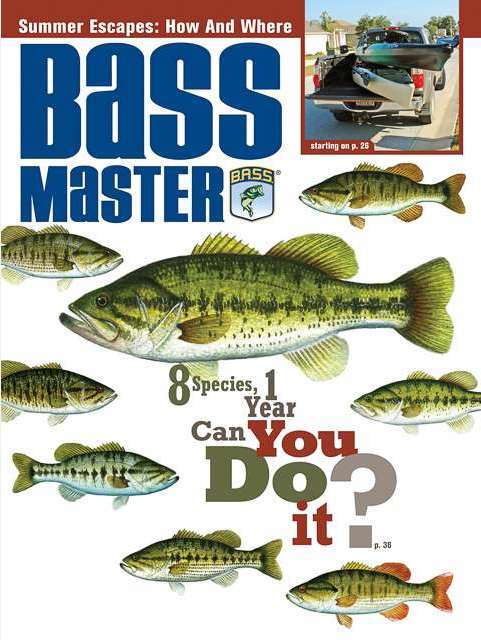
Editor’s note: Bassmaster Magazine covers from the 2000s.
“The real art of outdoor journalism is in storytelling. I think the writers of Bassmaster are the best in the industry at not only finding stories readers will learn from and enjoy, but they are also the best at telling these stories in a captivating manner. That’s something we have always been proud of.”
There’s a thought-out flow of each edition, from the columns, photos, light-hearted pieces and short takes to the how-to features, long stories and hardcore tips. In the end, Hall said he works to create an editorial terrain that offers a vibrant reading experience. One of Hall’s brainchilds is the “100 Best Bass Lakes” feature, which requires extensive work to cull through catch data from a variety of sources, and then rank lakes across the country overall and by region.
Admittedly, Hall said it’s been a tough act following two Bass Fishing Hall of Famers, but having Precht down the hall as a sounding board is comforting.
“I’ve been lucky to work for and beside Dave,” he said. “Bob and Dave built Bassmaster to one of the biggest magazines in the outdoor genre. So, Dave has experienced it all. Any bumps in the road, potential questions, difficult decisions, I can walk over to Dave’s office and ask, ‘What do you think of this?’ Without Dave, taking the reins of Bassmaster would have been intimidating. It’s been an easy transition. He’s been an incredible mentor and he continues to be, helping me stay on the right path. Because of his tutelage I’ve been able to feel confident about the product we make.”
Hall said Cobb’s funnel theory still works today even after 50 years of presenting fish-finding facts. Much of the content on the pages are select nuggets from experts that an average angler would never be able to learn on his own, Hall said.
“A lot of people make the mistake thinking there is no new information, no new techniques, tactics, that could possibly be out there that we haven’t already written about in the past 50 years,” Hall said. “That’s not true because of all the new technology, the way the reservoirs change, the places where we’re catching fish now.
“The sport has evolved so quickly that there’s always something new and inventive that someone has learned that we have not learned prior, at least that hasn’t been shared with the masses.”
Looking solely at some Bassmaster Elite anglers, Hall’s next statement might not seem that factual, but when one thinks of going to a new fishery and striking up a conservation with folks in a tackle shop, at the ramp or on the water, it rings authentic.
“Fishermen absolutely love to tell their secrets,” he said. “Bass fishing is still a fraternity, a brotherhood. There’s not many places you go fishing where you won’t find someone wanting to tell you how to catch fish and what the bass are biting on. They may not want to give you waypoints, but typically bass fishermen are a helpful group.”
And the Elites certainly do share plenty of their expert tips and knowledge in the pages. Readers even have had their say via the advent of Social Media. Hall said a recent “You Write the Caption” feature drew 20,000 cutline submissions, and B.A.S.S. members join whole-heartedly in features like “Ask the Experts” as well as writing letters and emails.
“We get plenty of compliments, especially on specific pieces, like the 100 Best Bass Lakes,” Hall said. “We get some harsh ones – ‘I can’t’ believe you left out … ’
“Actually, I enjoy the criticisms as much because it means they care about the magazine. If all we ever got was ice cream and cake comments, I’d probably be concerned. But when someone calls or emails, ‘I can’t believe the way you did this or that,’ that means they care enough about their magazine to take action. And we listen. Bassmaster Magazine exists for anglers. All comments, both good and bad, make Bassmaster better, period.”
In celebrating its Golden Jubilee, B.A.S.S. and its premier publication (B.A.S.S. Times is the organization’s monthly newspaper) look forward to bringing the sport into readers’ lives for many years to come.
“In a world where magazines are not thriving, Bassmaster is,” Hall said, “and I think that has a lot to do with the loyalty of the B.A.S.S. member and the growth within competitive bass fishing that B.A.S.S. has helped initiate through the myriad of youth competitions that are spiraling upward.
“The recent push of high school and college fishing, and now junior events just announced, it’s all really good news for us,” Hall said. “Those are future Bassmaster readers. And for those readers, both new and old, we continue to strive to create a really vibrant experience where the reader flips through the pages, and gets to the end and says, I can’t wait till the next one comes.”
Good fishing.


